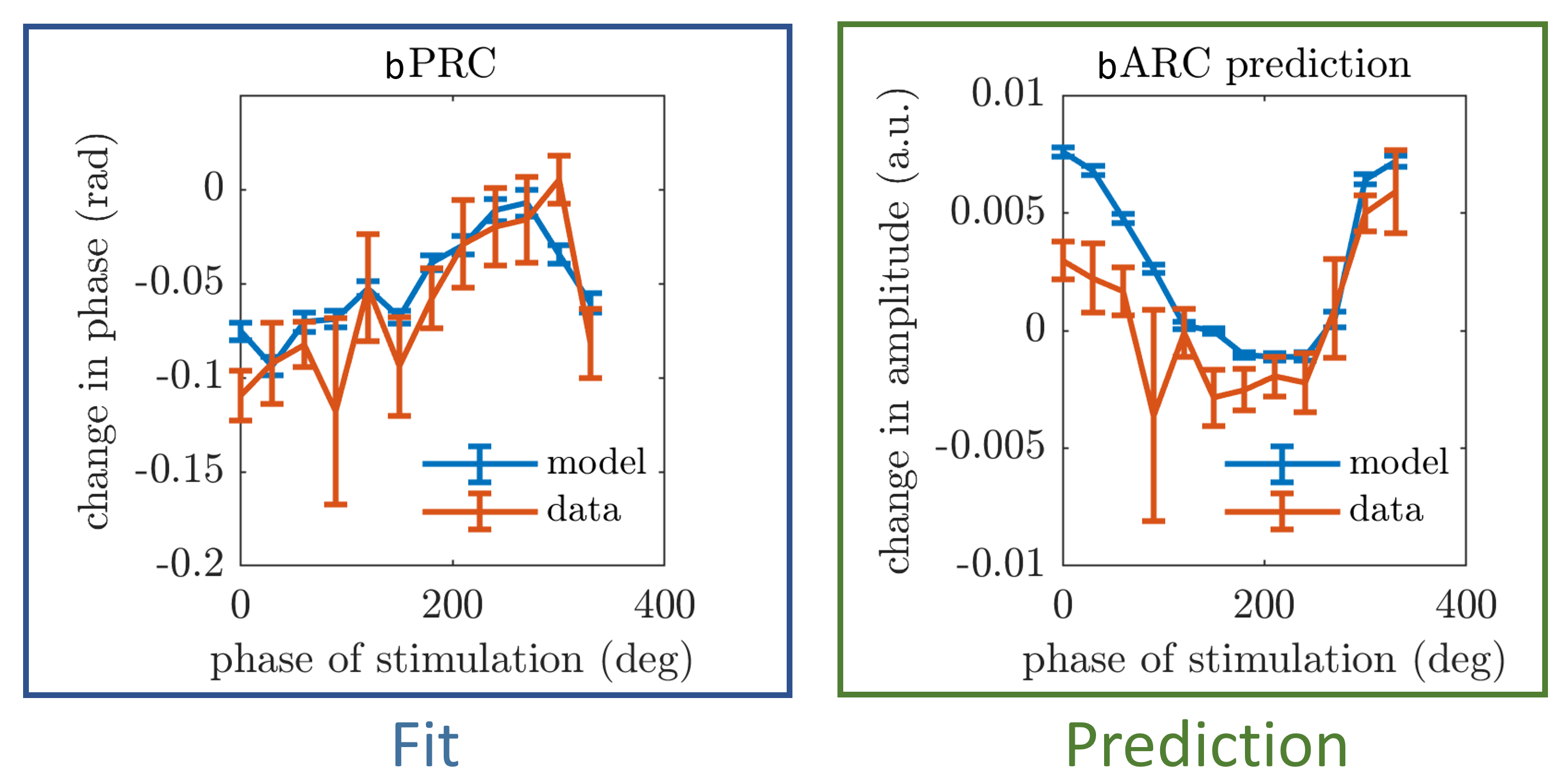Phase-dependence of response curves to deep brain stimulation and their relationship: from essential tremor patient data to a Wilson-Cowan model.
In this work, we show that a mathematical model of a simple feedback loop comprising excitatory and inhibitory nerve cells is enough to reproduce the dependence of the effects of deep brain stimulation on the stage (‘phase’) of the ongoing tremor. The model can predict the effect of stimulation on the size (‘amplitude’) of the tremor observed in patient data, and could be used to optimise novel deep brain stimulation strategies.
Essential tremor manifests predominantly as a tremor of the upper limbs. One therapy option is high-frequency deep brain stimulation, which continuously delivers electrical stimulation to the ventral intermediate nucleus of the thalamus at about 130 Hz. Constant stimulation can lead to side effects, it is therefore desirable to find ways to stimulate less while maintaining clinical efficacy. One strategy, phase-locked deep brain stimulation, consists of stimulating according to the phase of the tremor. To advance methods to optimise deep brain stimulation while providing insights into tremor circuits, we ask the question: can the effects of phase-locked stimulation be accounted for by a canonical Wilson-Cowan model? We first analyse patient data, and identify in half of the datasets significant dependence of the effects of stimulation on the phase at which stimulation is provided. The full nonlinear Wilson-Cowan model is fitted to datasets identified as statistically significant, and we show that in each case the model can fit to the dynamics of patient tremor as well as to the phase response curve. The vast majority of top fits are stable foci. The model provides satisfactory prediction of how patient tremor will react to phase-locked stimulation by predicting patient amplitude response curves although they were not explicitly fitted. We also approximate response curves of the significant datasets by providing analytical results for the linearisation of a stable focus model, a simplification of the Wilson-Cowan model in the stable focus regime. We report that the nonlinear Wilson-Cowan model is able to describe response to stimulation more precisely than the linearisation.

2021. J Neural Eng, 18(4):046023.
2025. Mov Disord, 40(9):1977-1982.